| Description: | If you're a terrific web designer, we'd love to talk with you! Seeking Web Interface Designer to work in a 3-6 person team. Design and deploy usable web interfaces. Experience in JQUERY, CSS, AJAX & building highly interactive websites required. |
| Required Experience: | 4-7 Years |
| Salary: | Not disclosed |
| Key Skills: | HTML, CSS, jQuery, Ajax, UI interaction and animation, PHP, Wordpress Theme Customiza, iis & C Panel, Application Testing, Application Planning, Adobe Suite, XML |
| Description: | Must Have Excellent Communication Skills with 5+ Years of ASP.Net, C#, SQL Server Healthcare Applications Back Ground | |
| Required Experience: | 5-8 Years | |
| Salary: | Not disclosed | |
| Role: | Team Lead/Technical Lead | |
| Key Skills: | Healthcare, Medical and Healthcare, HL7, jquery, SOAP, XML RPC, SQL, MYSQL, AJAX, ASP.NET, C# |
| Description: | Candidates with more than 1+yrs of experience in AR Calling, good Communications skills in English, US Healthcare (Denial,Billingand posting), AR Calling experience, Willing to work in Nightshifts |
| Required Experience: | 1-4 Years |
| Salary: | Not disclosed |
| Role: | Associate/Senior Associate -(NonTechnical) |
| Key Skills: | Callcenter, Telephone, Healthcare, Customer care, Voice Process, Process Associate, Customer service, BPO, KPO, ITES, AR caller, AR / AP |
We employ a human resource base of quality software professionals. We continue to hire the best and the brightest staff from the premier institutes and organizations of India and continues to make significant investments in research and development. One of the key factors for the success of our team members is their training and experience.




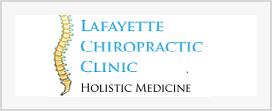


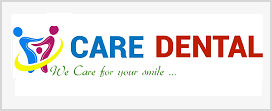

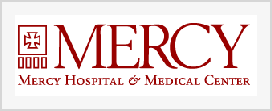

Dharma Solutions offers Software Solutions, Web Solutions, BPO Solutions, Offshore Software Development, Software Development, Web Development, BPO Services and Software Outsourcing Development in India.
We strongly believe that all businesses have their unique mission and objectives and a unique set of problems. Rather than implementing a solution, just because it works well with other companies, we design solutions that are appropriate for our clients, those that will work, not just today, but for years to come.
Quality is an integral part of the software development process at Dharma Solutions Inc.. We follow a well established and tested process for ensuring maximum benefits. The Quality Management System at Dharma Solutions Inc. enables it to deliver high quality software and services to its clients.
Company is founded with the vision of developing reliable, innovative business applications for small and medium business customers through state-of-the-art technology, innovation and leadership. We strongly believe that motivated and energetic team can do right thing and hence we believe in providing team with corporate culture designed to promote flexible work style and rewarding environment.
Revenue Management is the most significant feature in the business of Healthcare. Our expertise in AR calling constantly focus on enhance the revenue management and cash flow by reducing the accounts receivable days, bad debit and write offs.
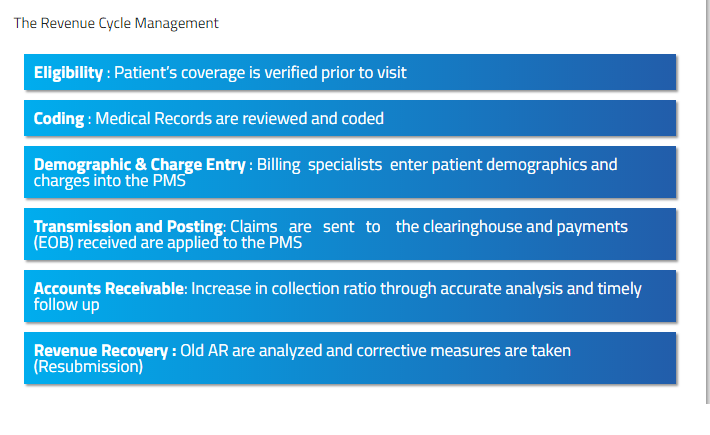
We can support to meet objectives in all of the above-mentioned areas and help in bringing maximum returns possible through our practical experience and expertise. Not only can we bring in financial gains but also put in worthy efforts to make your entire practice run seamless and reduce hidden overheads.
At Dharma, we do things differently. We make your practice EMR compliant and manage the technology piece. The practice can be designed to be paperless and workflows can be integrated to any third party EMR/ Practice management software through a customized solution. We have in-house expertise in database design and HL 7 interface implementation.





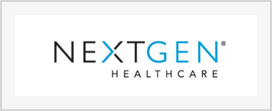




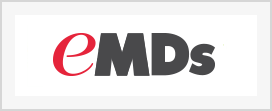
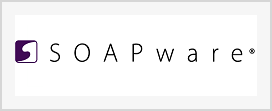

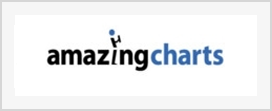
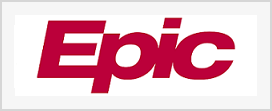
Services
Our team is made up of highly qualified and skilled professionals with an experience in a wide variety of IT services
Each day there are some development or expansion in some of these technologies and its solutions. Companies are developing applications which are affecting the whole industry like a wildfire. Global enterprises are struggling to navigate an ever-changing, complex environment. They must integrate new technologies and applications with limited resources, improve how they store and manage data stay current on technology and security standards and closely manage both project timelines and costs.
We offer elegant solutions for different types of requirements that the clients come up with. We devise applications which focus on fulfilling the company's needs and functionalities which make their work simpler. Help you address more complex IT challenges than can be met by our standard managed service offerings. Our specialists allow us to deliver a solution that goes beyond our standard hosting, security, or network offerings. Whether you need assistance assessing your IT application architecture or managing a complex network implementation, we can help.
Dharma Solutions enables you to outsource complex parts of your IT infrastructure, with custom hosted environments, or pre-built subscription-based solutions. This level of service allows you to rapidly deploy the latest technology while minimizing your implementation costs. We take care of overall management of schedules, risks and interdependencies creates a climate of clear, unambiguous communication that reassures all stakeholders of success.
Our Methodology
With a team of the best in profession, we ensure a quality application which meets your requirements
Whether you need to improve the experience of your end-users, reduce time-to-market, support a scalable environment, expand your e-commerce capabilities, ensure availability, or introduce new applications to meet changing business goals, our experts can not only implement customized solutions to address your technology needs, but also monitor and manage their performance freeing up your IT resources to focus on the business at hand. Our experts work with you to assess your specific needs, design and develop effective solutions, rapidly deploy applications, and extend your systems to partner communities.
Beside professional work and task management we also focus on cooperation and customer satisfaction. We make information technology more human by our client oriented customer service. We demand from our team good communication skills beside professionalism.
Our methodology ensures that we meet your requirements and deliver the best product suiting your needs. Our process is a product of research and observing the market. Following are some of the services we offer:
Website Development
Web Portals Development
Applications Development
Testing Services
Technologies
We employ a wide variety of technolgies to get the best service developed for the client. Also, our expertise in different technologies enables us to develop applications in different platforms. Some of the technologies we use are:
Microsoft Technolgies: .NET Framework, SQL Server, ASP.NET, Sharepoint etc.
Web Technologies: HTML5, Javascript, PHP, CSS3, JQuery
Azure Cloud Computing
HIPAA is ( Health Insurance Portability and Accountability Act )
Health Insurance Portability and Accountability Act (HIPAA) was introduced in the year 1996.
The act was conceived to guarantee that health insurance coverage is :
The Federal and State laws, including HCFA regulations were formulated to prevent fraud and abuse in the health insurance industry, especially in the Federal programs such as Medicare, and Medicaid.
There are established laws, rules and regulations that govern medical billing. Disregard or breach of these laws and regulations, in the course of our billing operations, can result in one or more of the following:
ICD-10 is the 10th revision of the International Statistical Classification of Diseases and Related Health Problems (ICD), a medical classification list by the World Health Organization (WHO). It contains codes for diseases, signs and symptoms, abnormal findings, complaints, social circumstances, and external causes of injury or diseases.[1] Work on ICD-10 began in 1983 and was completed in 1992.
The code set in the base classification allows for more than 14,400 different codes[citation needed], and permits the tracking of many new diagnoses compared to ICD-9). Through the use of optional sub-classifications[2] the number of codes can be expanded to over 16,000.[citation needed] Some national editions expand the code set even further; ICD-10-CM, for example, has over 70,000 codes.[3]
The WHO provides detailed information about ICD online, and makes available a set of materials online, such as an ICD-10 online browser,[4] ICD-10 Training, ICD-10 online training,[5] ICD-10 online training support,[6]and study guide materials for download.
The International version of ICD is the base classification for the national modifications of ICD. The adapted versions may differ in a number of ways.
The US has used ICD-10-CM since October 1, 2015.[25] This national variant of ICD-10 was provided by the Centers for Medicare and Medicaid Services (CMS) and the National Center for Health Statistics (NCHS), and the use of ICD-10-CM codes are now mandated for all inpatient medical reporting requirements. There are over 70,000 ICD-10-CM codes, which is up from around 14,000 ICD-9-CM codes.[25]
The use of ICD-10 for coding of death certificates and mortality data was mandated in the United States beginning in 1999.[26]
The deadline for the United States to begin using Clinical Modification ICD-10-CM for diagnosis coding and Procedure Coding System ICD-10-PCS for inpatient hospital procedure coding was set at October 1, 2015,[27][28] which is a year later than a previous 2014 deadline.[29] Before that 2014 deadline, the previous deadline has been a year before that on October 1, 2013.[30][31] All HIPAA "covered entities" must make the change; a pre-requisite to ICD-10-CM is the adoption of EDI Version 5010 by January 1, 2012.[32] Enforcement of 5010 transition by the Centers for Medicare & Medicaid Services (CMS), however, was postponed by CMS until March 31, 2012, with the federal agency citing numerous factors, including slow software upgrades.[33] The implementation of ICD-10-CM has been subject to previous delays. In January 2009, the date was pushed back by two years, to October 1, 2013, rather than an earlier proposal of October 1, 2011.
Some 27[8][9] countries use ICD-10 for reimbursement and resource allocation in their health system. Some have made modifications to ICD to better accommodate this use of ICD-10. The article below makes reference to some of these modifications. The unchanged international version of ICD-10 is used in about 110 countries for performing cause of death reporting and statistics.
The national versions may differ from the base classification in the level of detail, incomplete adoption of a category,[10] or the addition of procedure codes. For example; the ICD-10 Clinical Modification (ICD-10-CM) used in the US has some 93,000 codes,[11][not in citation given] compared to the ~16,000 within the international version.
Medical transcription, also known as MT, is an allied health profession, which deals in the process of transcription, or converting voice-recorded reports as dictated by physicians or other healthcare professionals, into text format.
History
Medical records have been kept since humans began writing, as attested by ancient cave writings. Medical transcription as it is currently known has existed since the beginning of the 20th century, when standardization of medical data became critical to research.[1][2] At that time, medical stenographers replaced physicians as the recorders of medical information, taking doctors' dictation in shorthand. With the creation of audio recording devices, it became possible for physicians and their transcriptions to work asynchronously, thus beginning the profession of healthcare documentation as we currently know it.[3]
Over the years, transcription equipment has changed from manual typewriters to electric typewriters to word processors to computers and from plastic disks and magnetic belts to cassettes and endless loops and digital recordings. Today, speech recognition (SR), also known as continuous speech recognition (CSR), is increasingly being used, with medical transcriptions and or "editors" providing supplemental editorial services, although there are occasional instances where SR fully replaces the MT. Natural-language processing takes "automatic" transcription a step further, providing an interpretive function that speech recognition alone does not provide (although Ms do).
In the past, these medical reports consisted of very abbreviated handwritten notes that were added in the patient's file for interpretation by the primary physician responsible for the treatment. Ultimately, this mess of handwritten notes and typed reports were consolidated into a single patient file and physically stored along with thousands of other patient records in a wall of filing cabinets in the medical records department. Whenever the need arose to review the records of a specific patient, the patient's file would be retrieved from the filing cabinet and delivered to the requesting physician. To enhance this manual process, many medical record documents were produced in duplicate or triplicate by means of carbon copy.
In recent years, medical records have changed considerably. Although many physicians and hospitals still maintain paper records, there is a drive for electronic records.[4] Filing cabinets are giving way to desktop computers connected to powerful servers, where patient records are processed and archived digitally. This digital format allows for immediate remote access by any physician who is authorized to review the patient information. Reports are stored electronically and printed selectively as the need arises. Many MTs now utilize personal computers with electronic references and use the Internet not only for web resources but also as a working platform. Technology has gotten so sophisticated that MT services and MT departments work closely with programmers and information systems (IS) staff to stream in voice and accomplish seamless data transfers through network interfaces. In fact, many healthcare providers today are enjoying the benefits of handheld PCs or personal data assistants (PDAs) and are now utilizing software on them.
Overview
Medical transcription is part of the healthcare industry that renders and edits doctor dictated reports, procedures, and notes in an electronic format in order to create files representing the treatment history of patients.[5] Health practitioners dictate what they have done after performing procedures on patients and MT’s transcribe the oral dictation and/or edit reports that have gone through speech recognition software.[6]
Pertinent up-to-date, confidential patient information is converted to a written text document by a medical transcriptionist (MT).[7] This text may be printed and placed in the patient's record and/or retained only in its electronic format. Medical transcription can be performed by MTs who are employees in a hospital or who work at home as telecommuting employees for the hospital; by MTs working as telecommuting employees or independent contractors for an outsourced service that performs the work offsite under contract to a hospital, clinic, physician group or other healthcare provider; or by MTs working directly for the providers of service (doctors or their group practices) either onsite or telecommuting as employees or contractors. Hospital facilities often prefer electronic storage of medical records due to the sheer volume of hospital patients and the accompanying paperwork. The electronic storage in their database gives immediate access to subsequent departments or providers regarding the patient's care to date, notation of previous or present medications, notification of allergies, and establishes a history on the patient to facilitate healthcare delivery regardless of geographical distance or location.
The term transcript or "report" as it is more commonly called, is used as the name of the document (electronic or physical hard copy) which results from the medical transcription process, normally in reference to the healthcare professional's specific encounter with a patient on a specific date of service. This report is referred to by many as a "medical record". Each specific transcribed record or report, with its own specific date of service, is then merged and becomes part of the larger patient record commonly known as the patient's medical history. This record is often called the patient's chart in a hospital setting.
As a profession
An individual who performs medical transcription is known as a medical transcriptionist (MT) or a Medical Language Specialist (MLS). The equipment used is called a medical transcriber, e.g., a cassette player with foot controls operated by the MT for report playback and transcription.
Education and training can be obtained through certificate or diploma programs, distance learning, and/or on-the-job training offered in some hospitals, although there are countries currently employing transcriptionists that require 18 months to 2 years of specialized MT training. Working in medical transcription leads to a mastery in medical terminology and editing, ability to listen and type simultaneously, utilization of playback controls on the transcriber (machine), and use of foot pedal to play and adjust dictations – all while maintaining a steady rhythm of execution. Medical transcription training normally includes coursework in medical terminology, anatomy, editing, grammar and punctuation, typing, medical record types and formats, and healthcare documentation.[10]
While medical transcription does not mandate registration or certification, individual MTs may seek out registration/certification for personal or professional reasons. Obtaining a certificate from a medical transcription training program does not entitle an MT to use the title of Certified Medical Transcriptionist. A Certified Healthcare Documentation Specialist (CHDS) credential can be earned by passing a certification examination conducted solely by the Association for Healthcare Documentation Integrity (AHDI), formerly the American Association for Medical Transcription (AAMT), as the credentialing designation they created. AHDI also offers the credential of Registered Healthcare Documentation Specialist (RHDS). According to AHDI, RHDS is an entry-level credential while the CHDS is an advanced level. AHDI maintains a list of approved medical transcription schools.[11] Generally, certified medical transcriptionists earn more than their non-certified counterparts. It is also notable that training through an educational program that is approved by AHDI will increase the chances of an MT getting certified and getting hired.
Curricular requirements, skills and abilities
Experience that is directly related to the duties and responsibilities specified, and dependent on the employer (working directly for a physician or in hospital facility).
Patient scheduling is one of the most important operational systems in your practice for the delivery of care; for physician, patient, and staff satisfaction; and for practice profitability. Often it does not receive the attention it needs, to the detriment of the practice. Here are five tips to improve your scheduling process.
Medical scheduler, also known as a medical appointment scheduler or a medical scheduling technician, is a type of administrative specialist. As a medical scheduler, you'll set up exams for patients and handle customer service inquiries.
With 85 percent or more of a typical healthcare practice’s expenses fixed, ensuring patients are scheduled effectively and efficiently is critical to maintaining and maximizing your practice revenue.
You do what you can to keep missed appointments to a minimum and ensure your patients are seen by the doctor as close to their scheduled appointment time as possible. But there will always be patients who are running a few minutes behind, patients who require immediate emergency attention, or other unexpected events that put the entire day’s schedule behind. Whether it happens at the very beginning of the day or mid-afternoon, it is inconvenient and frustrating to both the patient and practice staff.
Patient scheduling in itself may seem like a simple process, but efficient scheduling is very significant and impactful to your patients’ delivery of care and your ability to keep wait times to a minimum so patient satisfaction stays high and practice profitability stays consistent.
Although you may not be able to control how on-time a patient is for their appointment, there are things you can do on the staff end to ensure the schedule stays fluid, or recoup time that is lost in order to get the schedule back on track whenever possible. Being able to master this will keep office stress to a minimum and make sure your wait times stay within reason.
Things we follow for effective scheduling
1.Schedule from noon
Try your best to schedule morning appointments from noon backward and afternoon appointments from noon forward. Establishing this as the standard will help you maintain maximum productivity and ensure that the bulk of the day is scheduled out. If morning or afternoon slots don’t get filled, you can use those blocks of time much more efficiently by holding your staff meetings then, or cutting down on overhead costs by allowing staff members to come in later or go home earlier.
Empty slots throughout the day generally result in unproductive down-time, so implementing a scheduling a patient scheduling system or appointment scheduling software strategy such as this will help reduce wasted time.
2.Prioritize appointments
Patient visits vary in degree of time requirement and level of care needed. Consider these factors as you decide where and when to schedule your patients or whether you even need to put them on the schedule at all. Many patient issues can be resolved with a brief phone call or email. Have the staff member who fields incoming calls use their best judgement to evaluate each call to determine whether to schedule the patient or have your nurse or doctor address the issue via a phone consultation.
This approach ensures patients needing the highest level of care have better access to same-day appointments if necessary and practice profitability is maximized by treating patients with more complicated or significant medical concerns.
3. Confirm appointments with call reminders
Following up and reminding will improve upon the number of on-time arrivals and kept appointments. No-shows are costly and inconvenient especially when you are a particularly busy practice and have a good size waitlist. Both provider and patients miss out when a no-show occurs.
4. Create a patient waiting list
Last minute cancellations may be frustrating; however, with a patient waiting list, you are armed and ready when this unfortunate event occurs. Try using a patient scheduling platform that includes the ability to keep a list handy and ready to be notified. Being able to send out a mass notification of your immediate open slot is a huge time saver and revenue maintainer.
Instead of grabbing the phone when you get that dreaded appointment cancellation, quickly access your stored digital patient wait list and send out a quick message encouraging your patients to call you rather than the other way around which results in a waste of precious time that could rather be spent on more productive activities such as getting to know your patients better or increasing billing collections.
Dharma Solutions INC,8-2-334, 6th Floor, Adithya Court, Road No.3, Banjara Hills, Hyderabad-34
040-23540519
+(713) 344-1102
Dharma Solutions INC,8300 Bissonnet #570 Houston, TX 77074, USA
+(713) 344-1102
Fax: (713) 422-2353